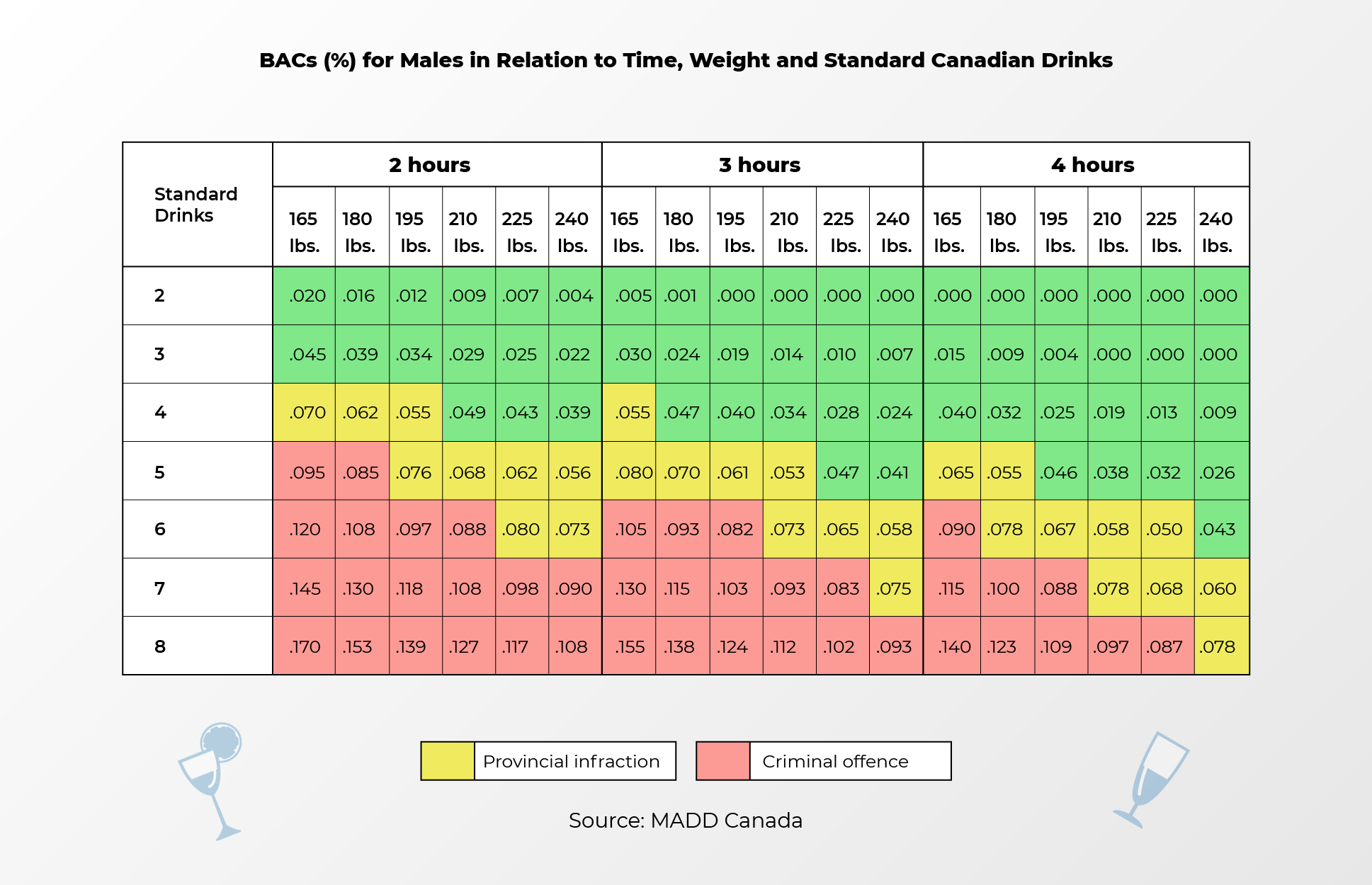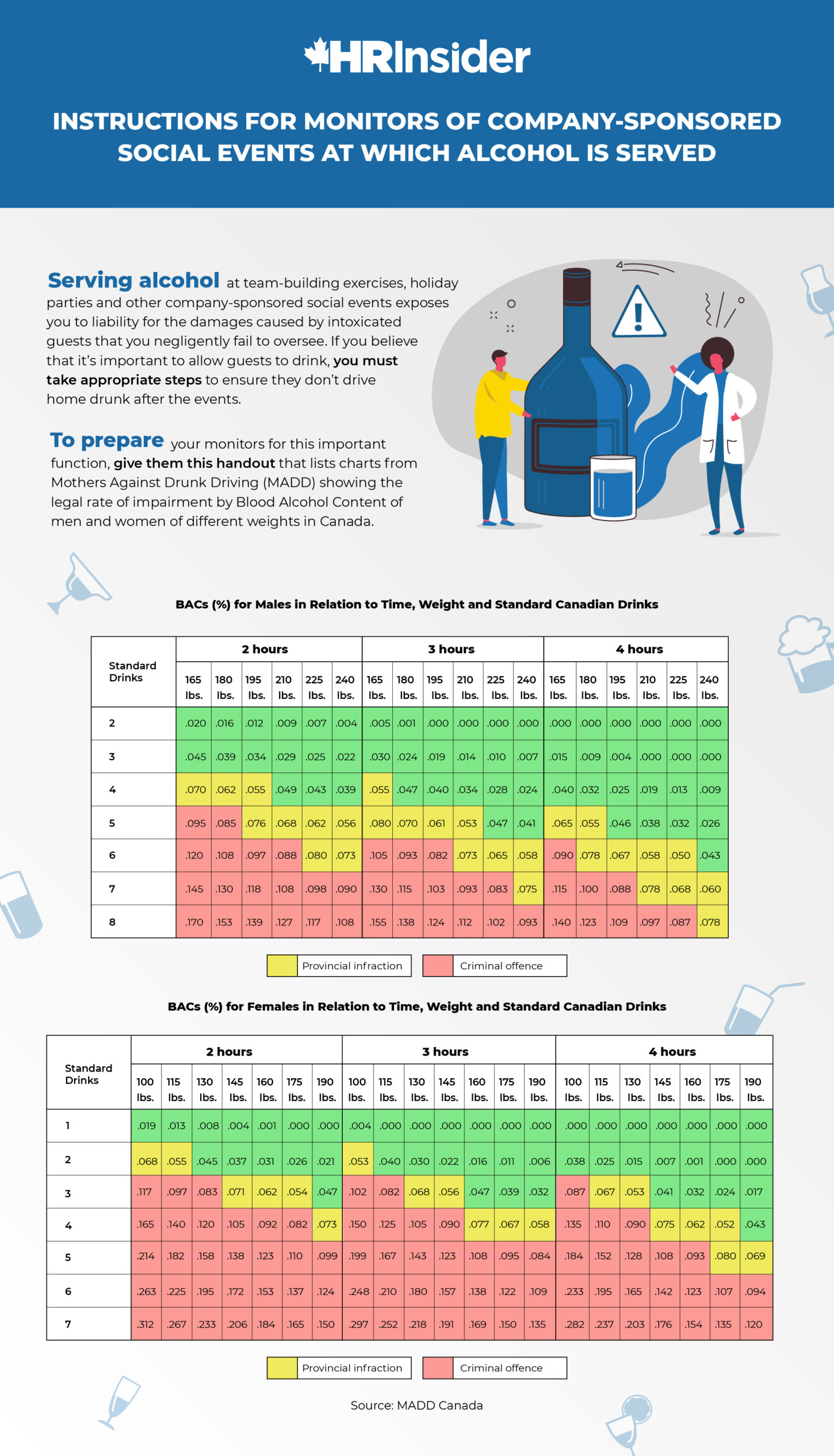Instructions for Monitors of Company-Sponsored Social Event at Which Alcohol is Served

Serving alcohol at team-building exercises, holiday parties and other company-sponsored social events exposes you to liability for the damages caused by intoxicated guests that you negligently fail to oversee. If you believe that it’s important to allow guests to drink, you must take appropriate steps to ensure they don’t drive home drunk after the events. One approach is to designate individuals to act as monitors to watch over guests and make “reasonable assumptions” about whether they’re impaired based on how much they drink, sex, weight and other risk factors. To prepare your monitors for this important function, give them this handout that lists charts from Mothers Against Drunk Driving (MADD) showing the legal rate of impairment by Blood Alcohol Content of men and women of different weights in Canada.


Notes—which pertain to both charts.
1 The BACs in these charts are based on lean body weight. Thus, a 200-pound man who’s 30 pounds overweight would have a higher BAC than a lean 200-pound man who drank the same amount of alcohol.
2 The BAC levels at which provincial and federal sanctions will actually be imposed are significantly higher than the shading in the charts indicates. First, the charts reflect the BAC that would be obtained in sampling a driver’s blood when initially stopped by the police. In contrast, the provincial and federal sanctions are based on readings from breath-testing machines and the ratio that these machines use to convert a driver’s breath/alcohol concentration into a BAC underestimates his or her actual BAC by approximately 10%. Second, in terms of the criminal offence, two evidentiary samples must be taken at least 15 minutes apart, and only the lowest reading is admissible. Third, the evidentiary BAC readings are invariably rounded down. For example, a driver with an evidentiary BAC of .086% is treated as having a BAC of .08% and thus would not be charged. Fourth, given the time it takes to process impaired driving suspects, their evidentiary BAC will often be considerably lower than their BACs at the time of driving. Finally, approximately 75% of officers in a national police study reported that they will not lay a criminal charge unless a suspect’s evidentiary BAC readings exceed .10%.
3 In Canada, a “standard drink” is based on a 12-imperial ounce beer containing 5% alcohol by volume, a 5-imperial ounce glass of wine containing 12% alcohol by volume or a 1½-imperial ounce serving of liquor containing 40% alcohol by volume. These drinks each contain 13.46 grams of pure alcohol.
4 A short-term administrative licence suspension may be imposed on drivers who have: a BAC ≥ .05% in AB, BC, MB, NB, NL, NS, NT, ON and PE; and a BAC ≥ .04% in SK. Suspensions may also be imposed on drivers who are reasonably suspected of being adversely affected by alcohol (typically based on having a BAC ≥ .05%) in NU and YK. QC has no comparable provision. It should be noted, as well, that all the provinces and territories other than NU, AB and YK impose licence suspensions of 3 months or 90 days on drivers who have a BAC ≥ .08%. NU has no comparable provision and the licence suspension in AB remains in place until the disposition of the related criminal charge. The licence suspension in YK is the shorter of 90 days or until the accused is convicted of the related criminal charge.
5 The Criminal Code, R.S.C. 1985, c. C-46, s. 253(1)(b) prohibits driving or having care or control of a motor vehicle with a BAC in excess of .08%.
